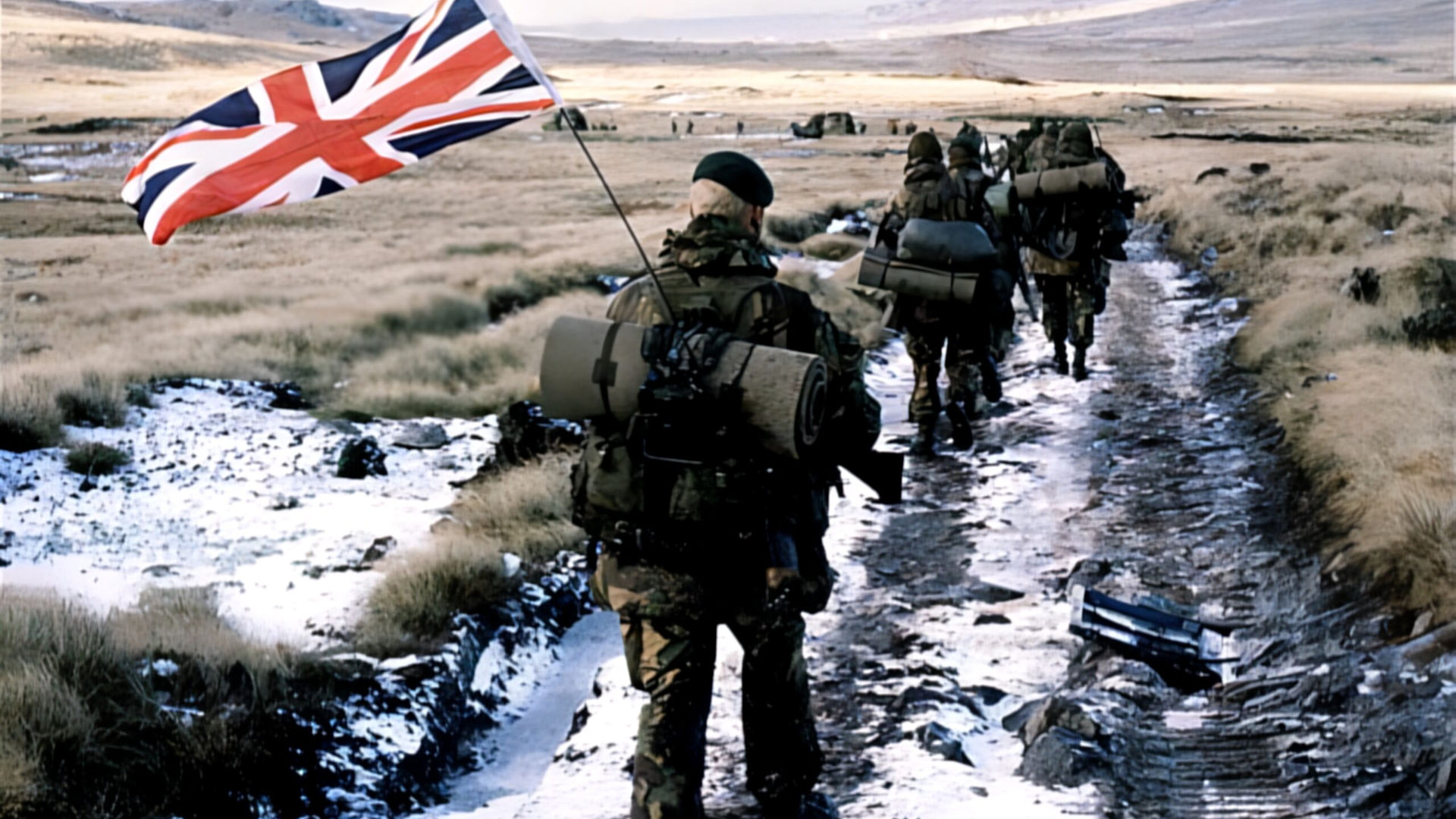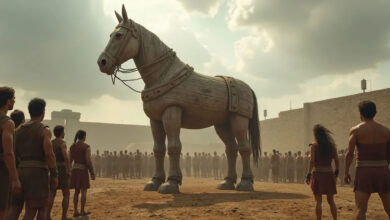The Falklands War
The Falkland Islands, known in Argentina as the Islas Malvinas, lie about 300 miles off the coast of South America and have been the subject of territorial dispute for nearly two centuries. Although the British had maintained continuous control since 1833, Argentina never relinquished its claim, insisting that the islands were part of its national territory.
Tensions simmered for decades but flared in the early 1980s. Argentina, ruled at the time by a repressive military dictatorship facing domestic unrest and economic crisis, saw an opportunity to rally national unity by reclaiming the islands. The British government, led by Prime Minister Margaret Thatcher, was also struggling with economic woes and a decline in global influence. Neither side initially anticipated a full-scale war.
The Invasion
On 2 April 1982, Argentine forces launched Operation Rosario, an amphibious assault that quickly overwhelmed the small British garrison in the capital, Port Stanley. British marines were outnumbered and outgunned, and within hours the Falklands were under Argentine control. The Argentine government declared victory, and celebrations erupted in Buenos Aires.
The British government, however, responded with determination. Thatcher’s cabinet decided almost immediately to retake the islands by force. Within days, a naval task force was assembled and sent south. It included aircraft carriers, destroyers, frigates, submarines, and troop ships. The United Kingdom was about to engage in a full-scale military operation 8,000 miles from home.
Mobilising for War
Britain’s response was swift and strategic. The Royal Navy spearheaded the effort, with two aircraft carriers, HMS Hermes and HMS Invincible, playing a central role. Harrier jump jets were deployed for air support, while nuclear submarines were sent to patrol the waters around the islands.
Logistics presented enormous challenges. The sheer distance required extensive planning and coordination, including mid-ocean refuelling, long-range air support, and the rapid mobilisation of troops and supplies. Over 25,000 personnel were eventually deployed, along with nearly 100 ships and dozens of aircraft.
The South Atlantic winter added another layer of complexity, with rough seas and unpredictable weather hampering operations.
Naval Warfare and the Loss of the Belgrano
The first significant blow of the war came on 2 May, when the British nuclear submarine HMS Conqueror torpedoed and sank the Argentine cruiser ARA General Belgrano. Over 300 Argentine sailors were killed, making it one of the deadliest incidents of the war. Although the ship was outside the exclusion zone declared by Britain, the attack was seen by the UK as a necessary military action. Argentina saw it differently, accusing Britain of unjustified aggression.
The sinking had immediate consequences. The Argentine navy retreated to port and played no further active role in the conflict. From that point on, the naval dimension of the war was dominated by British vessels and aircraft.
Air Power and the Loss of British Ships
Argentina, however, maintained a formidable air force and launched several daring attacks against the British fleet. Using French-made Super Étendard jets and Exocet missiles, Argentine pilots managed to sink key British vessels, including HMS Sheffield and the merchant ship Atlantic Conveyor. The attacks caused significant casualties and underscored the vulnerability of surface ships to modern missile technology.
Despite these losses, British air defences held firm, with Sea Harrier jets gaining a reputation for their effectiveness in dogfights. The Royal Navy’s presence and air superiority were crucial in maintaining control over the seas surrounding the islands.
The Land Campaign
By mid-May, British forces had landed on the islands. Troops came ashore at San Carlos Water, establishing a beachhead on East Falkland. From there, they began a gruelling overland advance towards Port Stanley, facing harsh terrain, cold weather, and sporadic resistance from Argentine forces.
Key battles took place at Goose Green, Mount Harriet, Mount Tumbledown, and Wireless Ridge. These engagements involved intense close-quarters combat, often fought at night and under challenging conditions. British forces, supported by naval gunfire and helicopters, gradually gained the upper hand.
On 14 June 1982, Argentine forces in Port Stanley surrendered. The war was over, just 74 days after it had begun. Britain had retaken the Falklands.
Casualties and Cost
The war came at a high human cost. Over 900 people died, including 649 Argentine military personnel, 255 British service members, and three Falkland Islanders. Many more were wounded, and the psychological toll on veterans from both sides would last for decades.
The conflict also brought long-term economic and political consequences. Britain spent billions of pounds on the war, while Argentina suffered both financially and diplomatically.
Political Consequences
In Britain, the victory significantly boosted the popularity of Margaret Thatcher and her Conservative government. Previously facing low approval ratings, Thatcher’s decisive handling of the war was seen as a demonstration of national resolve. The following year, she won a landslide re-election.
In Argentina, the consequences were the opposite. The humiliating defeat discredited the ruling junta, led by General Leopoldo Galtieri. Public outrage over the military’s failure sparked protests and ultimately led to the collapse of the dictatorship. By 1983, Argentina had returned to democratic civilian rule.
Long-Term Impact
The Falklands War reshaped British defence policy and reaffirmed the importance of a capable navy. It highlighted the need for rapid deployment forces and improved logistical capabilities. Lessons learned during the campaign influenced military planning for years to come.
For Argentina, the war remains a sensitive and unresolved issue. The country continues to claim sovereignty over the islands, although diplomatic efforts have replaced military ones. The residents of the Falklands, mostly of British descent, have repeatedly expressed their desire to remain under British governance.
On the international stage, the war served as a rare example of a post-colonial conflict that escalated into open warfare between two nations. It raised questions about the legitimacy of force in territorial disputes, the rights of self-determination, and the role of military power in modern geopolitics.
Legacy
The Falklands War is remembered not only for its military engagements but also for its profound symbolic significance. It was a war fought far from home, over a small territory of immense national pride. For Britain, it restored confidence in the armed forces and bolstered national identity during a period of uncertainty. For Argentina, it marked the end of military rule and the beginning of a democratic transition. Though brief, the war left deep scars and lasting lessons. It remains a powerful reminder of how rapidly political disputes can escalate and how distant conflicts can shape the future of nations. The legacy of the Falklands War endures in military textbooks, political debates, and in the memories of those who served.
The Falklands War FAQ
The Falklands War was fought in 1982 between the United Kingdom and Argentina over sovereignty of the Falkland Islands in the South Atlantic.
The conflict lasted for 74 days, from April 2 to June 14, 1982.
Major battles included the sinking of the General Belgrano, the air attack on HMS Sheffield, and land engagements at Goose Green, Mount Tumbledown, and Port Stanley.
Britain recaptured the islands, while Argentina’s defeat led to the fall of its military junta and a return to democracy.






